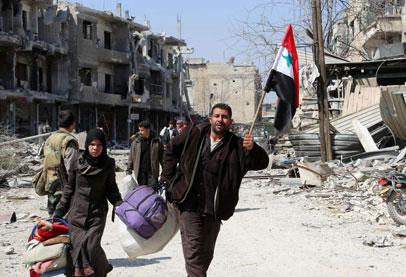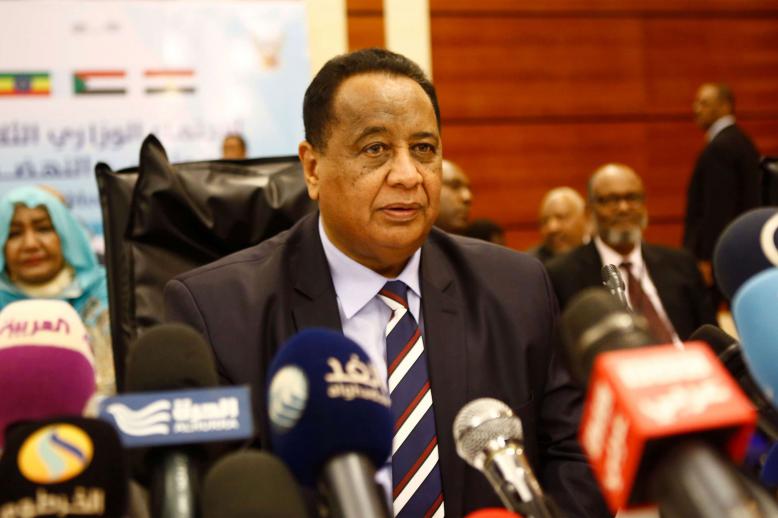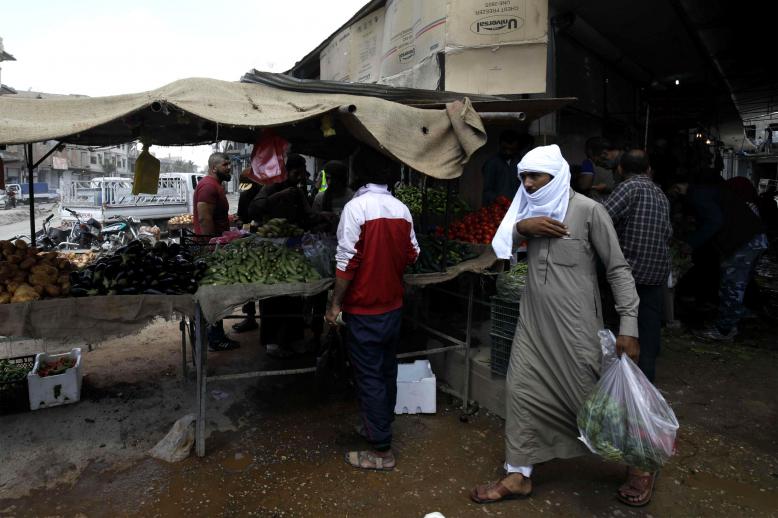Old order disintegrates in Middle East region

The Middle East, largely defined by Britain and France, the victors of the first world war, is falling apart as the region is consumed by unrivalled conflicts and political upheaval. It is splintering along religious and tribal lines — the very ones that the colonial powers failed to recognise — in large part a consequence of the calamitous Anglo-American invasion of Iraq in March 2003.
“We’re seeing the centrifugal forces of tribal or religious or ethnically divided societies coming apart because the old guard has lost influence and credibility due to the passage of time, grass-roots forces empowered by new technologies and the deep frustrations and disengagement of outside powers,” explained David Rothkopf, editor-at-large of the journal Foreign Policy.
Syria lies at the apex of this disintegration, splintered by a 7-year-old war that has come to involve the entire region along with the United States, Russia, Saudi Arabia and Turkey.
The country that was once an Arab powerhouse is likely to fragment into at least three sect-based entities: Iran-backed minority Shias on the north-eastern border with Shia-dominated Iraq along with a minority Alawite statelet and a majority Sunni region. It is possible there would also be self-ruling Kurdish and Druze enclaves.
The breakup of Syria is widely seen to be inevitable because most people refuse to be ruled by the harsh, Alawite-dominated regime under the Assad dynasty, which since 1971 had become a dynastic republic through a smothering network of institutionalised corruption, fear and terror.
The region has never been stable since the Ottomans were crushed in world war one after ruling the region for some 400 years. The subsequent collapse of their empire and the artificial division of Arab lands between the wartime victors Britain and France doomed the region to decades of death and destruction.
“In an increasingly globalised international system the region has never recovered from losing the political and civilisational hub it had in Constantinople,” political commentator Ziad M. Belbagi observed.
“Successive regional multinational bodies have been unable to build links between the nation states of the Middle East in anything close to the former Ottoman system,” he said in a 2017 analysis published by the National Interest.
He noted that “the most problematic legacy of the Ottoman breakup has been the carving up of the region irrespective of cultural, religious and tribal realities.
“In the region’s most pressing conflict, the boundaries of the Syrian state have shown themselves to be fragile, with a Kurdish uprising in the north, an Alawite colony to the west and the country’s eastern border having become a wholly porous frontier with Iraq.”
Iraq, which under Saddam Hussein was the Arab bulwark against expansion by an increasingly emboldened Shia Persia, the Sunni Arabs’ historical enemy, is widely expected to emerge as the first Arab Shia state as Iran, which is non-Arab, steadily gains power there amid the political ruins left by the Americans.
If dominance by Iraq’s Shias, a long-suppressed majority under Saddam’s reign, does come to pass, Tehran will have scored a major victory. That includes securing Iraq’s oil reserves of 144 billion barrels to add to its own reserves of 150 billion, thus surpassing Saudi Arabia’s 257 billion barrels.
The 2011 uprisings against authoritarian and corrupt regimes in countries brought into being by the Europeans were caused by generations of abusive and selective power by supposedly republican political dynasties that sought the respectability of kingdoms.
“Long repressed identities have re-emerged, challenging the unity of many Muslim states and blurring once-solid geopolitical lines,” Belbagi noted.
“Ottoman provinces became Arab kingdoms while Christian and Jewish enclaves were carved out in Lebanon and Palestine. Syria, Libya and Palestine were given names resurrected from Roman antiquity. Libya reappeared in 1934 when the Italians combined Cyrenaica with Tripolitania and Fezzan.
“Europeans had little interest in understanding the maze of Middle Eastern identities. A large Kurdish population — today numbering perhaps 25 million — was divided between four states: Turkey, Iran, Iraq and Syria. Shia Arabs were split between Iraq, Kuwait, Bahrain and the eastern provinces of Saudi Arabia.”
Analyst Galip Dalay, an expert on Turkey and Kurdish affairs and a non-resident fellow at the Brookings Doha Centre, noted in a recent analysis that he did not envisage the emergence of new nation-states based on sectarian or ethnic grounds, but autonomous regions within these states, what he calls “the atomisation of sovereignty.”
“Despite all the talk of breakups, Middle Eastern borders have proven to be tenacious. They have resisted the pressure of territorial disorders,” Dalay observed.
“And yet, order in the nation-states underpinning these borders is crumbling. New forms of political authority and autonomous regional entities are emerging across the region.
“The idea and nature of sovereignty is rapidly changing. No longer are central governments or well-entrenched regimes the sole contenders for sovereignty. Though post-colonial borders remain in place, sovereignty within nation-states in the region has been shared and challenged,” Dalay noted.
“At the national level… take Syria: the regime, the opposition, the Kurdish Democratic Union Party (PYD) and the Islamic State [ISIS] all have territorial enclaves of their own, where they exert sovereignty. Likewise, both Libya and Yemen have been effectively turned into regionalised states…
“At a regional level, both Iran and Turkey are using their foreign policies to directly limit the sovereignty of Syria. Iran exerts major influence over the Syrian security apparatus, if not the state structure as a whole.
“Likewise, Turkey now has an enclave of its own in Syria as a result of its Operation Euphrates Shield. Likewise, Egypt and the United Arab Emirates have violated the sovereignty of Libya, while Saudi Arabia, the UAE and other allied powers are doing the same in Yemen.”
Dalay concluded: “This national disorder is taking place within the larger framework of regional disorder. Since the start of the Arab uprisings, the region’s authoritarian status quo has been shaken to its core but a new regional order has yet to emerge.
“The region is passing through a geopolitical vacuum, leading to deadly rivalries among the major regional powers particularly Saudi Arabia and Iran — and causing the intensification of damaging proxy wars which are destroying the fabric of Middle Eastern societies, weakening state structures and poisoning inter-state relations.”
The end of the old order started with the ill-advised and ultimately calamitous US-led invasion of Iraq in March 2003. The backlash created what became ISIS, and “a series of upheavals that left no country or relationship in the region unscathed,” Rothkopf observed.
Middle East specialists believe that Iraq, where Iranian influence grows by the day and is likely to deepen with powerful Iran-backed Shia militias recently inducted into the state military structure and likely to dominate parliamentary elections on May 12, may splinter into three sectarian cantons in the not-too-distant future.
The bloodshed between the minority Sunnis, backed by Saudi Arabia, and the majority Iran-affiliated Shias will likely intensify. Iraq’s three Sunni-dominated western provinces and Sunni-held territory in northern Syria are seen as a potential statelet, while the Shia-dominated south with its major oilfields may be another.
Iraq’s Kurds already have autonomy but they want something their widely dispersed people have never had: a fully fledged state.
Even the 70-year-old Palestinian-Israeli dispute, long the core conflict in the modern Middle East, has been eclipsed by the broader sweep of historic change that is coursing through the region, perhaps the final corrective convulsion of the cause of Arab nationalism that world war one helped to spawn, and may even in the end become a victim of it.
The irony is that as the prospect of new states emerging from the region’s political earthquakes increases, the hapless Palestinians will be left out of the new order.
In Syria, the tattered regime of President Bashar Assad sustained only by Russian and Iranian blood and treasure remains intact and vengeful. The complexity of the crisis has become even more complicated with Turkey’s military intervention in the north-west.
It is assured of further complexity if NATO-member Turkey, which has waged a 40-year war against its own state-seeking Kurdish minority, sticks to its objective of preventing the emergence of a Kurdish state on its southern border.
Interventions by Russia and Iran on one side and the United States and its regional allies on the other have contributed greatly to Syria’s worsening woes by arming various anti-Assad groups; the more so since their objectives range from saving the Damascus regime from total collapse to arming militant Islamic groups to prevent al-Qaeda and ISIS from grabbing territory in the turmoil to enhance their wars against the West.
To see how Syria and the Levant are shaping up, one need only look at the chaos in oil-rich Libya at the other end of the Mediterranean and how seven years of conflict wrought largely by the rash intervention of outside powers and their subsequent failure to ensure the emergence of a coherent modern state are tearing apart what remains of the country on Europe’s southern flank.
Ed Blanche has covered Middle East affairs since 1967. He is the Arab Weekly analyses section editor.
This article was originally published in The Arab Weekly.




